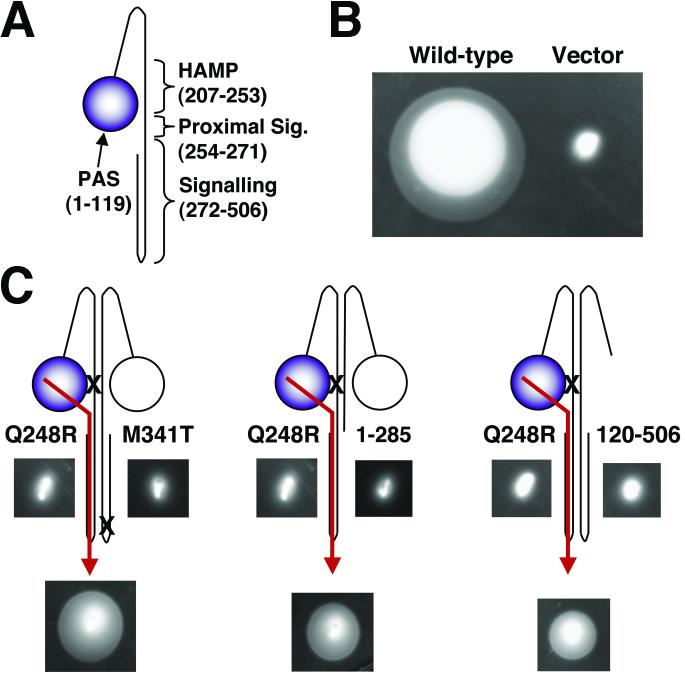Fig. 7.
The minimal sequence required for aerotaxis in an Aer heterodimer. A. The organisation and boundaries of domains relevant to the experiments described in B and C. B. For heterodimer experiments, mutant Aer constructs were expressed from compatible plasmids in BT3400 (aer, tsr, recA), an aerotaxis- and recombination-deficient E. coli strain. In succinate soft agar, aerotactic colonies, such as BT3400 expressing wild-type Aer, expand rapidly and form a defined ring at their edge. In contrast, non-aerotactic colonies (e.g., BT3400 expressing vector alone) stay trapped near the inoculation site. C. In succinate soft agar, colonies formed by cells expressing the homodimers of each mutant Aer protein were non-aerotactic (as shown on both sides of each cartoon), whereas colonies formed by cells expressing the heterodimers shown were aerotactic (as shown beneath each cartoon). Arrows indicate the proposed signalling pathway within each heterodimer. Heterodimer experiments, such as those shown, indicate that Aer requires one PAS and one signalling domain, but two HAMP domains, in order to support aerotaxis. Modified from (Watts et al., 2006a). Used with permission. Abbreviation: Sig., signalling.

